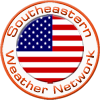Metar Lookup |
|
METAR (Aviation Routine Weather Report) reports typically come from airports or
permanent weather observation stations. Reports are typically generated once an hour; if conditions change significantly,
however, they can be updated in special reports called SPECI's (acronym roughly translates as Aviation Selected Special
Weather Report). Meanwhile, the international standard code format for terminal forecasts issued for airports, TAF, also
took effect. The acronym translates to Aerodrome Forecast. Some reports are encoded by automated airport weather stations
located at airports, military bases, and other sites. Some locations still use augmented observations, which are recorded
by digital sensors, encoded via software, and then reviewed by certified weather observers or forecasters prior to being
transmitted. Observations may also be taken by trained observers or forecasters who manually observe and encode their
observations prior to their being transmitted. |
Understanding the METAR |
| A downloadable METAR Decode Key Chart is available HERE. Must have Adobe PDF Reader to view. |
Some of the significant dates in the changeover from SA to METAR, and from FT to TAF are as follows:
- On 01 January 1996, the NWS converted to the new international METAR format for international dissemination and to the new international TAF format at 90 locations.
- On 01 February 1996, TAF formatted forecasts issued for an additional 12 U.S. airport locations were instituted. beginning . At that time, SAs and FTs have been replaced with METARs and TAFs and SAs and FTs are discontinued.
- On 1 July 1996 at 0800 hours UTC the NWS undertook the most significant change for observing, reporting, and coding surface weather observations and terminal forecasts in the past forty years by completely converted to the new METAR/TAF code formats for domestic dissemination
The Federal Aviation Administration (FAA), which determines aviation requirements in the United States, has determined that the domestic transition to the METAR/TAF code is vital to the standardization of these reports worldwide. The National Weather Service (NWS) and Department of Defense (DOD) are complying with this requirement. The benefits of having the U.S. standardize to these new code formats are as follows:
- Hourly and special observations are used both as stand alone data for the sites and as inputs to global weather models for both analysis and forecasting.
- It is this global use of each small bit of information which drives the need for standardization.
- Additionally, the increase in international flights between the U.S. and other nations from more U.S. locations than ever before lends itself to developing a more "seamless" international standard for aviation.
- Moreover, standardization becomes vital for the general aviation community for flights from the U.S. to Canada, the Caribbean Area, and Mexico.
The biggest change in converting to METAR is the change in the order of how elements are reported. For example:
- The winds field (an important aviation element) will be reported first rather than in the middle of the observation.
- Remarks and additive data will continue to be included and reported much as they are today.
- The sea-level pressure that used to be in the body of the observation will now be reported in the remarks section.
Some other significant changes from the currently used airways or SA code are as follows:
- Individual elements shall not be reported if they are missing or indeterminable,
- METAR requires the 4 LETTER ICAO station identifier (e.g., KFTW, PANC, or KMGW),
- METAR has no explicit ceiling designator; the first broken or overcast layer aloft is inferred to be the ceiling,
- the reporting and evaluating units for sky cover will be eighths or oktas rather than tenths, and
- Runway visual range (RVR)¹ information shall be reported in the body of the METAR observation rather than in remarks as it is reported in the SAO code.
A sample observation in the SAO code appeared as follows:
IAD SA 1055 11 SCT E15 OVC 1/2S-F 045/33/29/2119G27/945/R04VR30
PK WND 1929/16
Whereas the same observation in the 1996 U.S. METAR code appears as follows:
METAR KIAD 081055Z AUTO/COR² 21019G27KT 1/2SM R04R/3000FT -SN FG
SCT011 OVC015 01/M02 A2945 RMK PK WND 19029/16 SLP045 T00081016
Despite all the high speed computers and communications that we have today a weather code is still required but is nothing new. The current SA code has been in place for over 40 years, and the conversion to METAR is a follow-on which is not very different. As for having these products reported in a plain language format, this is not feasible. Despite the advances in today's technology, the communication circuits used for transmitting the large and diverse suite of meteorological products (radar, upper air, climatological data, forecasts, watches, warnings, outlooks, etc.) have a finite capacity. The conversion to a plain language format for thousands of domestic and international observations that are generated each hour of the day is impractical and would easily overwhelm our meteorological communication circuits. However, having now standardized to a considerable extent does allow computer programs to expand the "code" into plain language.
However, if you are getting plain language reports, it is because the service you subscribe to (DUATS, WSI, Pan Am data, etc.) is providing that for you. These services are well aware of the transition to METAR and should continue providing the same service that they do today. You should check with your weather provider and ask what their plans are for METAR.
The U.S. had been using METAR and TAF codes prior to this time. The upcoming domestic conversion to METAR was really phase 2 of a two-phased project. Phase 1 was completed in July 1993 when the U.S. began converting SA formatted products to METAR for international dissemination. In addition the NWS has issued both the domestic terminal forecast (FT) and TAF formatted forecasts for 90 of the larger international airports in the U.S. There are over 500 additional airports where terminal forecasts are currently produced in only the FT format.
There are also some commercially available METAR/TAF training and education products on the market that you may wish to consider. For example, the King Schools in San Diego, CA are now developing a METAR/TAF training video that should be available commercially sometime this Spring. In addition, Jeppesen Sanderson, Inc. in Englewood, CO has a chapter on the METAR/TAF code in its Private Pilot Manual, and also has plans to produce a videotape with METAR/TAF training information. This is by no means a complete list of such commercially available products. We suggest that you consult aviation publications and associations for listings of other such commercially available METAR/TAF training products. The METAR conveys much the same information to the users as the SAO code does but there are changes. Examples of changes are given in the following paragraphs. The FMH-1 METAR will clearly define all observing standards under METAR and the reader should refer to the FMH-1 METAR as is posted on this information page.
Note 1:
Please note that for some interim period of time that augmented RVR values from ASOS at level 5 airports will appear in the remarks section while
RVR from all manual sites will be in the body of the observation.
Note 2:
This AUTO/COR field is new and indicates one of two things. If it is AUTO, it indicates that the data is from an automated station with no human
intervention; if it is blank it indicates that it is either a manual station or an automated station with an observer signed on. COR, as in the
SA code, indicates a corrected observation.










